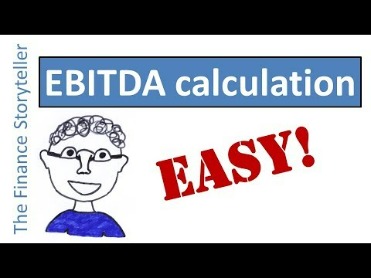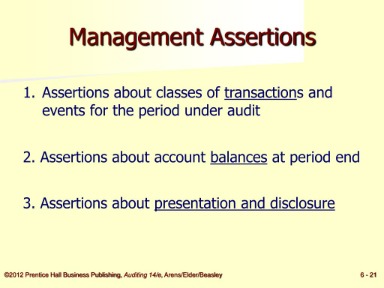
Nevertheless, organizations must contend with a series of reconciliations, accruals, and validations to ensure that their month-end statements are accurate and complete. A month-end closing process should generally include the same steps each month. However, manually integrating data from different departments can present new challenges each time.

This month-end close process flowchart should give you a high-level idea of what a high-growth B2B SaaS company like Gem has to cover each period. But keep in mind that each general task will have many individual steps under it. And the timeline will depend on the specific context of your business. That means that by the time they finish last month’s reporting, it’s nearly time to start the whole cycle again for the next accounting period.
How our Month End Close Checklist Template will help your firm
The first tab “Close Checklist” is a clean version of the checklist that doesn’t have owner, progress, date complete, or comments. The first thing you will want to do is to go over the individual Sections and Activities to ensure these are the right ones for how insurance works your month-end close. The activities included in this listing are not all-inclusive, and they have not been designed to meet your specific needs, goals, fact pattern, etc. When tasks are performed depends in large part on staffing, goals, and technology.
The first step in the month-end closing process is to collect all the relevant financial information. It includes income statement items (e.g., accounts receivable), expense records (e.g., accounts payable), and other daily transactions. Journal entries of recurring monthly transactions must be performed at the time of the month end close. This applies to such transactions as accrued expenses, amortization, depreciation, and loan interest.
Ways to Knockout Time from Your Oracle Subledger Reporting
A higher number of mistakes and delays can result from dependence on slow, error-prone manual processes. Lack of automation increases the chances of such mistakes, which in turn delays approvals. If transactions are registered manually via spreadsheets, there will most likely be mistakes, double entries, or omissions in the entries. Even experienced professionals can be mistaken once in a while or get overwhelmed with large volumes of information to process during peak-season. Lack of centralized and coherent data can jinx the month-end process from the start.
- A cloud-based solution that makes it easy for accounting firms to manage client work, collaborate with staff, and hit their deadlines.
- Once the general ledger has been updated, the next step is to prepare the financial statements, which can be done either with compiled data in a spreadsheet or automation tools.
- The profit and loss account summarizes the company’s income and expense transactions for the period.
- Check the ending balances for all the relevant bank accounts against the balance sheet, then go through the history of deposits and withdrawals to check for discrepancies.
Its AI-powered transaction detection system gives access to real-time data and helps spot errors. It also automates manual tasks like financial data collection and reconciliation. Month-end financial statements are invaluable sources of information about a company’s financial health that help stakeholders make informed business decisions.
Free Chart of Accounts Template
This step also makes you aware of how much cash you have on hand as a business. In fact, Accounting Today reports that 36% of their 259 surveyed accounting and finance professionals say they’ve had to reschedule out-of-work commitments during the month-end close process. The month-end close is one of the accounting and finance team’s most important tasks.
LGBTQ + cultural competency training for health professionals: a … – BMC Medical Education
LGBTQ + cultural competency training for health professionals: a ….
Posted: Wed, 09 Aug 2023 07:00:00 GMT [source]
You won’t have to guess if you close out the books at the end of every month. The month-end close process is a hallmark of any business in presenting consistent and precise financial statements. The month-end close process can also face obstacles if an accounting team is understaffed or if present staff lacks sufficient training. While many bottlenecks can be neutralized by introducing automation solutions, employee skills are still crucial for configuring an efficient process.
And when processes are managed consistently, adapting to personnel changes or acquisitions becomes much less overwhelming. A month-end close checklist is critical to ensuring a smooth and successful close process. Its purpose is to provide visibility into the status of each task, manage resources or deadlines, and reduce confusion as turnover happens or roles and responsibilities change. Our solutions complement SAP software as part of an end-to-end offering for Finance & Accounting.
Streamline your month-end close process with this expert-built checklist
This process allows you to confirm the balances in the balance sheet line items, which are the assets and liabilities plus the owner’s equity accounts. In addition to confirming the accuracy of the balance, reconciling the AR ledger ensures your financial reports are also accurate. It allows you to report correct tax deductions, curb fraud, and maintain a good relationship with your customers. The goal of accounting software is to build a unified, digital environment where every team can collaborate towards the completion of the checklist.
The month-end close is when companies finalize their financial statements at the end of each month. It is typically finished within 10 days of the end of the month – for instance, a deadline for May closing might be June 10th. Month end reconciliation is another term for the month end close process. Some companies use the term because the month end close requires the reconciliation of a range of accounts.
Unfortunately, this process is time consuming and error prone, so finding an automated solution is essential. End-of-month checklists reduce the time it takes to organize and submit internal financial reports. A well-thought-out to-do list keeps accountants and management on the same page when it comes to receiving financial reports. This month-end close checklist outlines not only the transactions, but also the growth of the company for each period. Also, the timelines depend on the specific situation of your company.
Finding automation solutions that can transfer data to the accounting system can be a game-changer. For instance, the majority of modern procurement tools support integrations with accounting software. They can automatically carry numbers from the earliest procurement steps to the final accounting ones with minimal human intervention. The whole process of monthly reviews can be overwhelming, so we have prepared a concise checklist for you to go over before closing the books.
Accounts Payable Job Description: Templates for Hiring at Your … – Small Business Trends
Accounts Payable Job Description: Templates for Hiring at Your ….
Posted: Thu, 01 Jun 2023 07:00:00 GMT [source]
Not having access to information when needed makes it difficult to make decisions and plan for the future. Along with that, you can make more informed decisions based on your company’s financial activities. It positions your executive team to make cash allocations that benefit each department of the company. It provides compliance and financial accuracy while preserving your data’s integrity for analysis planning. Spending and trading activity are somewhat predictable, but each month can introduce new issues that you and your teams need to consider.
It is challenging to manage a business without readily available financial statements. Without the right tools, your organization’s processes will become less effective and you will lose insight. Even after entering data into the system, your accounting team still needs to ensure the information is accurate across all platforms. One of the challenges we face in completing month-end closing tasks is that manually entering data is time consuming. While you may have multiple systems in place to help run your business, it is more likely that they will ultimately run independently. For instance, having an accurate monthly report makes year-end closing much more straightforward.
